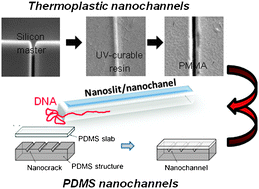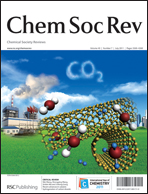Fluidic devices that employ nanoscale structures (<100 nm in one or two dimensions, slits or channels, respectively) are generating great interest due to the unique properties afforded by this size domain compared to their micro-scale counterparts. Examples of interesting nanoscale phenomena include the ability to preconcentrate ionic species at extremely high levels due to ion selective migration, unique molecular separation modalities, confined environments to allow biopolymer stretching and elongation and solid-phase bioreactions that are not constrained by mass transport artifacts. Indeed, many examples in the literature have demonstrated these unique opportunities, although predominately using glass, fused silica or silicon as the substrate material. Polymer microfluidics has established itself as an alternative to glass, fused silica, or silicon-based fluidic devices. The primary advantages arising from the use of polymers are the diverse fabrication protocols that can be used to produce the desired structures, the extensive array of physiochemical properties associated with different polymeric materials, and the simple and robust modification strategies that can be employed to alter the substrate's surface chemistry. However, while the strengths of polymer microfluidics is currently being realized, the evolution of polymer-based nanofluidics has only recently been reported. In this critical review, the opportunities afforded by polymer-based nanofluidics will be discussed using both elastomeric and thermoplastic materials. In particular, various fabrication modalities will be discussed along with the nanometre size domains that they can achieve for both elastomer and thermoplastic materials. Different polymer substrates that can be used for nanofluidics will be presented along with comparisons to inorganic nanodevices and the consequences of material differences on the fabrication and operation of nanofluidic devices (257 references).

You have access to this article
 Please wait while we load your content...
Something went wrong. Try again?
Please wait while we load your content...
Something went wrong. Try again?


 Please wait while we load your content...
Please wait while we load your content...